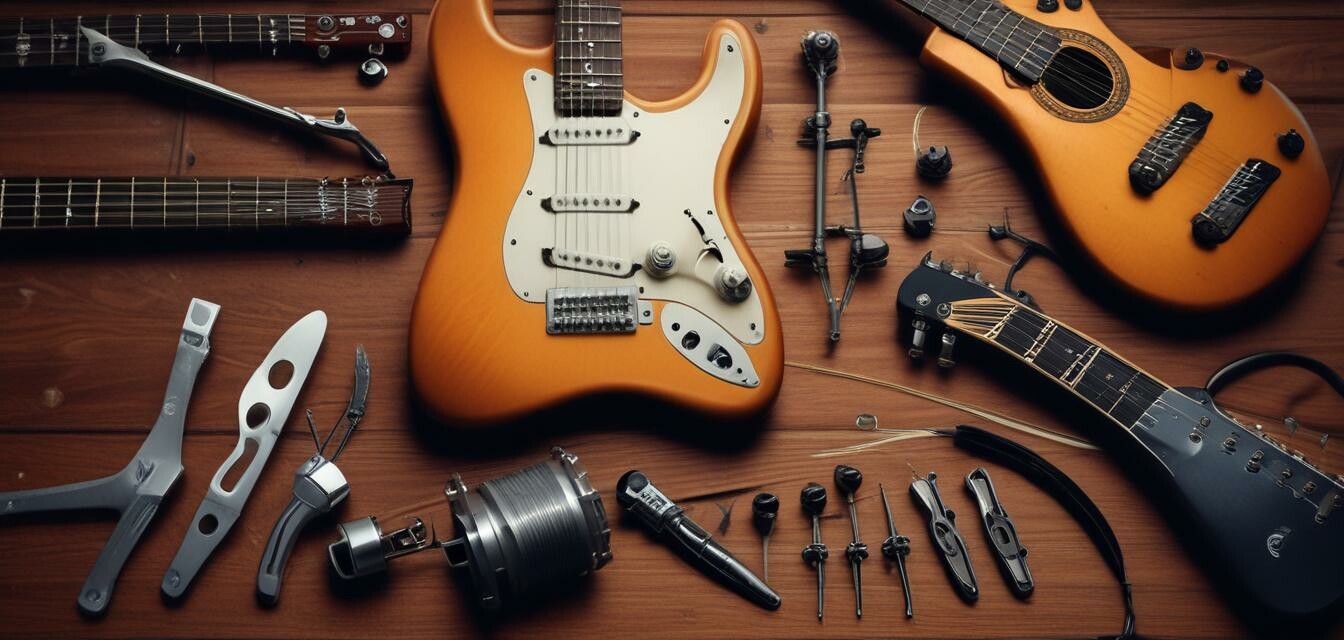
Setting Up Your Fender Guitar for Optimal Performance
Key Takeaways
- Regular adjustments improve playability and sound quality.
- Understanding the components of your guitar is crucial for effective setup.
- Maintenance is key to extending the lifespan of your Fender guitar.
- Proper tools can make setup tasks easy and efficient.
- Learning from experts helps enhance your guitar skills.
Setting up your Fender guitar is an essential process that not only enhances its playability but also ensures optimal sound quality. In this guide, we will explore various adjustments, maintenance best practices, and tips to achieve the best performance from your beloved instrument. Whether you're a beginner or an experienced musician, understanding how to set up your guitar properly can significantly improve your playing experience.
Understanding Your Fender Guitar Components
Before diving into the setup procedures, it’s essential to familiarize yourself with the main components of your Fender guitar. Here’s a quick overview:
| Component | Function |
|---|---|
| Neck | Holds the frets and facilitates the stretching of strings. |
| Body | Acts as the resonating chamber that amplifies the sound. |
| Bridge | Secures the strings and transfers vibrations to the body. |
| Tuning Pegs | Adjusts string tension to control pitch. |
| Pickups | Converts string vibrations into electrical signals for amplification. |
Tools You’ll Need for Setup
Having the right tools is crucial for an effective setup. Here are some essential tools:
- Tuner
- String winder
- Capo
- Allen wrench set
- Small screwdriver set
- Ruler or string action gauge
Best Practices for Setting Up Your Fender Guitar
Step 1: Restring Your Guitar
Starting with a fresh set of strings is key for optimal performance. Here’s how to do it:
- Remove old strings carefully.
- Clean the fretboard with a suitable cleaner.
- Attach new strings, ensuring they are properly aligned through the bridge and tuning pegs.
- Tune the strings to the desired pitch.
Step 2: Adjusting the Action
The action refers to the height of the strings above the fretboard. Too high can cause difficulty in playing, while too low can cause buzzing. Here’s how to adjust:
- Use a ruler to measure the action at the 12th fret.
- Adjust the bridge saddle height using an Allen wrench.
- Recheck the measurement and fine-tune as needed.
Step 3: Intonation Adjustment
Ensuring your guitar is in tune across the fretboard is essential. Here’s how to check and adjust intonation:
- Use a tuner to check the pitch of an open string.
- Fret the string at the 12th fret – it should match the open string's pitch.
- If it doesn't, adjust the saddle position forward or backward to correct it.
Maintaining Your Fender Guitar
Maintenance plays a significant role in your guitar’s performance and lifespan. Implement these practices:
- Keep your guitar clean and dust-free.
- Store it in a case to prevent damage.
- Regularly check and adjust the setup.
- Avoid exposing it to extreme temperatures and humidity.
Expert Tips for Optimal Performance
Finally, here are a few expert tips to help you achieve the best results from your Fender guitar setup:
- Always tune your guitar before playing.
- Experiment with different string gauges to find your preferred feel.
- Try different pickup positions to vary your sound.
- Regularly consult expert resources for updates on techniques and maintenance.
Pros
- Enhanced playability leads to a more enjoyable playing experience.
- Regular setup helps in identifying potential issues early.
- Improves sound quality and performance.
Cons
- Requires time and effort to master setup skills.
- Improper adjustments can result in playability issues.
Conclusion
Setting up your Fender guitar for optimal performance is a rewarding process that greatly enhances your playing experience. With the right tools, techniques, and regular maintenance, you can ensure that your guitar always plays and sounds its best. Whether you are a passionate guitarist or just starting your musical journey, understanding how to properly maintain and set up your instrument is invaluable. For more tips on guitar maintenance and latest trends, keep exploring our blog!